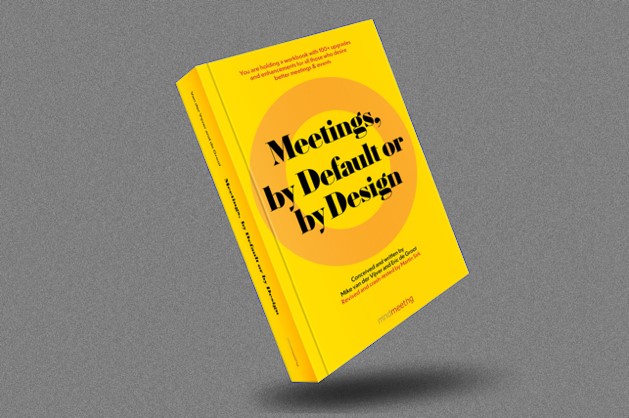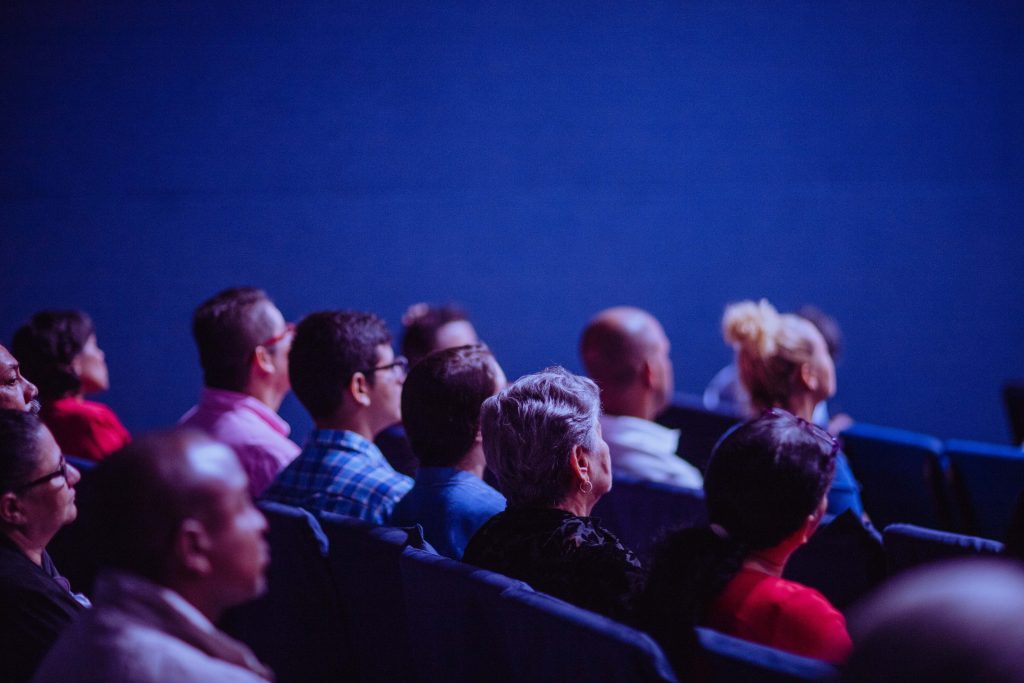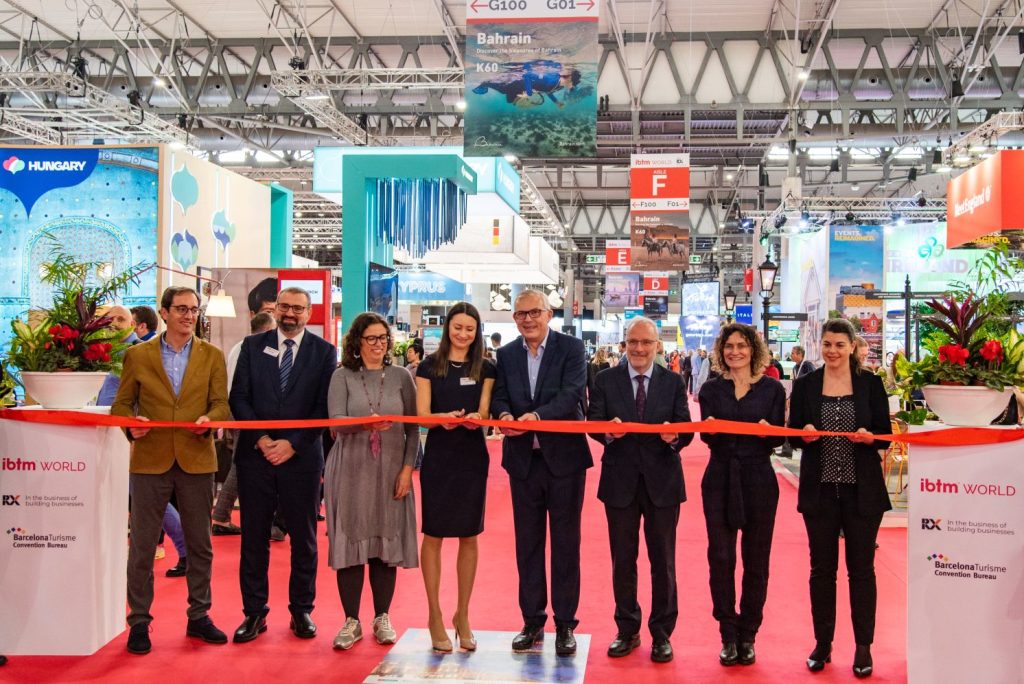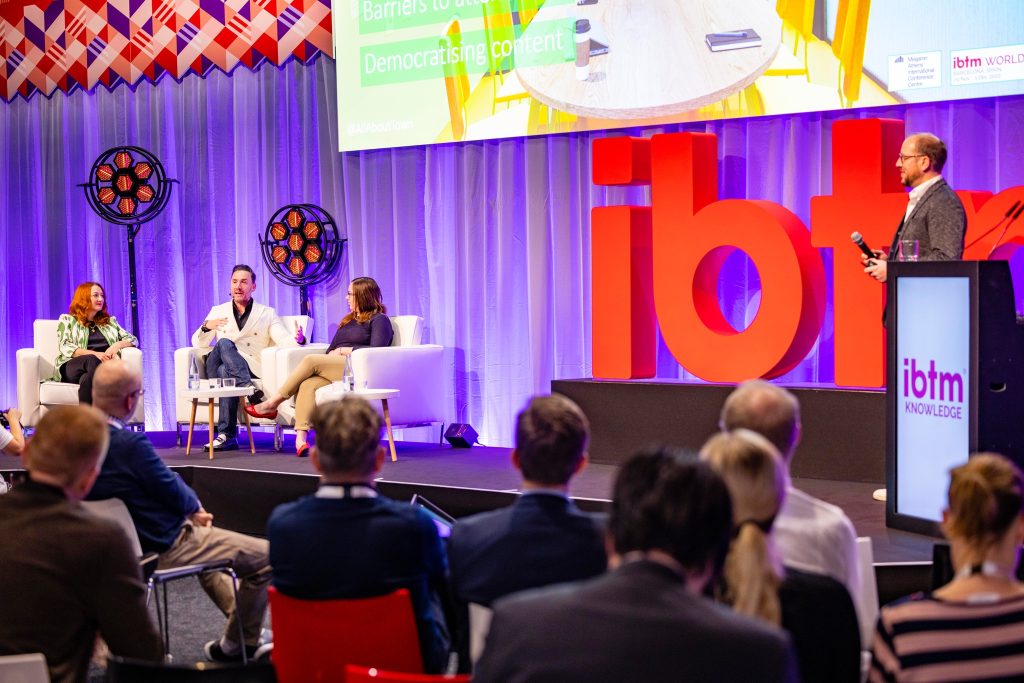Meeting design is still a great way to improve events, as this book remind us

Share news
Listen
Rather than a book, it is a workbook, claim the authors, stressing it “offers improvement suggestions for meetings and events on forty different topics, ranging from meeting objectives to openings and closings, and from dealing with elephants in the room to spicing up content”. What did we get out of it?
The book reviews the six reasons for having meetings (they claim all reasons fall into these categories: learning, networking, alignment, motivation, decision-making, and ritual. The first thing the book helps you do is the basis: understanding your reasons and their relative importance, something important since one can have various reasons to have an event, it is important to review them. The authors even suggest you determine the relative weight of all these reasons. What percentage of reason to have your event can be attributed to each of these six categories? Based on this, you will decide what effort, time, budget to attribute to each activity.
It is also full of cases of original meetings. They give the example of an event where 50 members of a Dutch government agency had to meet to improve their project management. They organised this event in a bus, touring the country, and asking participants to have a discussion with someone different in each transfer, covering a topic which could be professional or personal. “The bus became intimate and brought intense conversations”, they say, stressing that people built relationships with many colleagues, something important to facilitate group work. As an added bonus, for a public agency, having a meeting not in a cold hotel but touring the country is a great way to stay connected to their purpose: the citizens.
A few fresh ideas. The authors are always thought-provoking, questioning our standard ways of working and applying science about how humans work. The book if full of them but let me give five examples:
- Spend time understanding the problem. We love to start conceiving, creating, organising… too early. They remind us that a good understanding of the context, the objectives and the participants is key. For instance, they advise us to list the motives why participants don’t do what you wanted them to, in an exercise of detailed and honest reflexion. You know changing behaviours is a key objective of meetings, now make sure you understand how people behave today, why, and what could make them change that behaviour.
- Get people to act during the meeting, not after. As they say, too many meetings talk about what should be done, and not much about starting the implementation of these changes. So ideally you should get people to start implementing the concepts, define their agenda or roadmap to implement those concepts.
- Be more engaging in your knowledge-transfer. They remind us that “knowledge-transfer is a complex process, which requires that knowledge is processed actively by the recipient, preferably in interaction with other people and connecting it with the listener’s needs and experiences” and applying methods such as gamification and role play. Experiential learning has been known to be effective for a while now, but frankly, do you apply it thoroughly?
- Go beyond the event. As they write, changing behaviours is really difficult, and attempts at convincing or forcing usually do not work. We have to go for nudging, or influencing, making the other people want to take up that new behaviour. And here they remind us of something essential: take care of the “return to the office” moment after the meeting. Your message and the methods you want people to follow but be still communicated when back in the office, for instance, putting a checklist of what was discussed in the meeting, on their desks. Or you can send everyone an SMS stressing that other people are starting to work in this new way. Your meeting is probably too focused on d-day and on carrots and sticks, rather than a more subtle influence still being exerted after coming back to the office.
- Connect your experience to your objectives, and your event will be more memorable. They explain that even if you hold an event in a beautiful castle, if people are just spectators, they won’t bring home much memory. Your activities should involve participants to experience the environment (a role play, a game to find something, or simply connecting the messages to the environment.

Can anything be improved in this book? Well, it gives an impression of permanent calculation and optimization, which can clash with the spontaneity of events. Organising networking in such a “results-oriented way” could end up feeling unnatural in some contexts or for some groups. Serendipity is still omnipresent in events and adds much value by the possibility to have natural encounters which bring value (contacts, ideas, business opportunities…) that was not originally considered. Probably part of our events have to not be “by design”. This it by no means a criticism of a book that brings powerful and useful ideas, rather a reminder (from a Latin reader) that not all can or should be planned, and maybe part of your design could escape this perfect planning. But a very little part: to be honest, we should apply this way of planning meetings much more than today, as effective, methodical and science-based designers.
Overall, this is a must-read in an industry where method and science are still sorely lacking. It is concrete, inspiring, it opens your mind by questioning a thousand things you probably do by default. And it is useful beyond events, as a method to change behaviours, communicate effectively, motivate people, and many other objectives.
To give a broader meaning to their new publication, the authors are setting up a “World Tour” of small-scale book launches, one of which took place during the MIS in Madrid and which did not consist in a typical explanation, but rather as a hands-on workshop from which they extracted understanding of how meeting professionals see the objectives and priorities of their meetings. After such presentations around the world, during IMEX Frankfurt in May 2023 the authors will report back on their findings, as well as in subsequent other international events.
And you can (you should!) buy the book here at Amazon.com, or at Amazon Spain, or form the authors.











